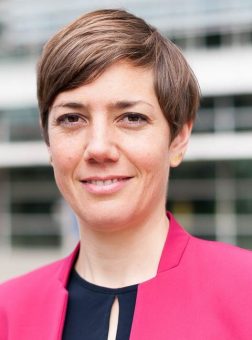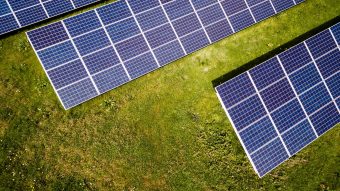
SolarPower Europe is the leading European association for solar energy, founded in 1985. This association represent over 250 companies and organizations across the entire solar value chain; from solar manufacturers, to installers and national associations. To become a member of SolarPower Europe, you must complete our online application, and the final approval is given by the SolarPower Europe Board. We discussed the benefits of the membership in the Association with Walburga Hemetsberger, the CEO of SolarPower Europe
EP: SolarPower Europe aims to achieve that more energy is generated by solar than any other energy source by 2030. How can policy makers, society and companies get involved in accomplishing this goal? Which strategies and tools does SolarPower Europe use to promote clean energy?
Walburga Hemetsberger: Our mission is to ensure more energy is generated solar than any other energy sources by 2030 – and we need all hands-on deck to achieve this goal! Policymakers can help towards this goal by enacting the best possible frameworks for solar to thrive (pro-solar legislation). One example is the capital of Vienna, where the city government has announced that solar must be installed on all new buildings, which will increase rates of solar deployment. Companies can get involved by opting for solar and renewable energy to power their operations. IKEA for example has installed solar on 370 of their store and warehouse locations worldwide. The wider society can contribute to this goal by installing solar on their homes and businesses. Solar is today the lowest-cost energy technology and will save on electricity bills and is good for the planet. At SolarPower Europe, we promote solar energy through our advocacy, campaigns and initiatives to provide information and raise awareness on a variety of topics that are critical to the growth of our technology.
EP: You have so many campaigns that you run. Which one would you highlight as the most important one and why? How do you measure the success of your campaigns?
Walburga Hemetsberger: SolarPower Europe leads campaigns on the most important issues for the European solar sector. In 2017, SolarPower Europe launched the ‘Small is Beautiful’ campaign, a campaign to support small-scale renewable installations in Europe which were at risk in the then EU Clean Energy Package negotiations. Our aim was to safeguard regulatory incentives such as priority dispatch for small-scale installations on homes, schools 49 and hospitals – key drivers of the European energy transition. SolarPower Europe lead a group of 17 partners, including renewable energy associations, mayors of cities, cooperatives, property owners and construction associations and we were ultimately able to safeguard priority dispatch for small-scale renewables installations in Europe – a huge victory for renewables!
In focus:
EP: How can solar energy help delivering the European Green Deal?
Walburga Hemetsberger: Solar can really be the engine that drives the European Green Deal. To be climate-neutral by 2050, Europe needs a massive renewable transition. With incredible benefits, solar shines through as the key part of this transition.

Solar is the most flexible energy source, and can be installed on your home, school, business – the possibilities are endless. 25 percent of EU energy demand could be met by solar on buildings alone. As the most low-cost energy solution, solar can so can also tackle energy poverty and protect households and businesses from fossil-fuel driven energy price hikes.
The solar market is growing exponentially – 2021 was the best year of European solar ever with 25.9 GW capacity connected to the grid. Even cautious scenarios predict that the capacity of EU solar installations will double within four years, reaching 327.6 GW by 2025. This massive growth potential will support the huge renewable transition needed.
EP: Using solar energy in agriculture is gaining popularity all over the globe. SolarPower Europe released the Agrisolar Best Practise Guidelines in order to shed light on the main business models and benefits of Agrisolar. Can you tell us more about Guidelines and what are your predections when it comes to development of agrisolar projects by 2050?
Walburga Hemetsberger: Our Agrisolar Best Practice Guidelines seek to demonstrate how agriculture and solar can complement each other, while delivering a much-needed boost to rural development. Agriculture is particularly vulnerable to climate change, but also contributes to carbon emissions – the sector is the second highest emitter in the EU after energy.
Solar power tackles the wider issue of climate change, and at farm level can be used to protect crops and animals from extreme temperatures and improve biodiversity. There are a number of success stories within our Best Practice Guidelines, such as sophisticated, temperature-sensitive, agri-PV installations that rotate to shelter grapevines from strong sun, while generating power for hundreds of local homes. We can only expect the agri-PV segment to grow as farmers and solar companies realise the enormous potential for collaboration.
Interviewed by: Nevena Đukić
Read the story in the new issue of the Energy portal Magazine ELECTROMOBILITY.




